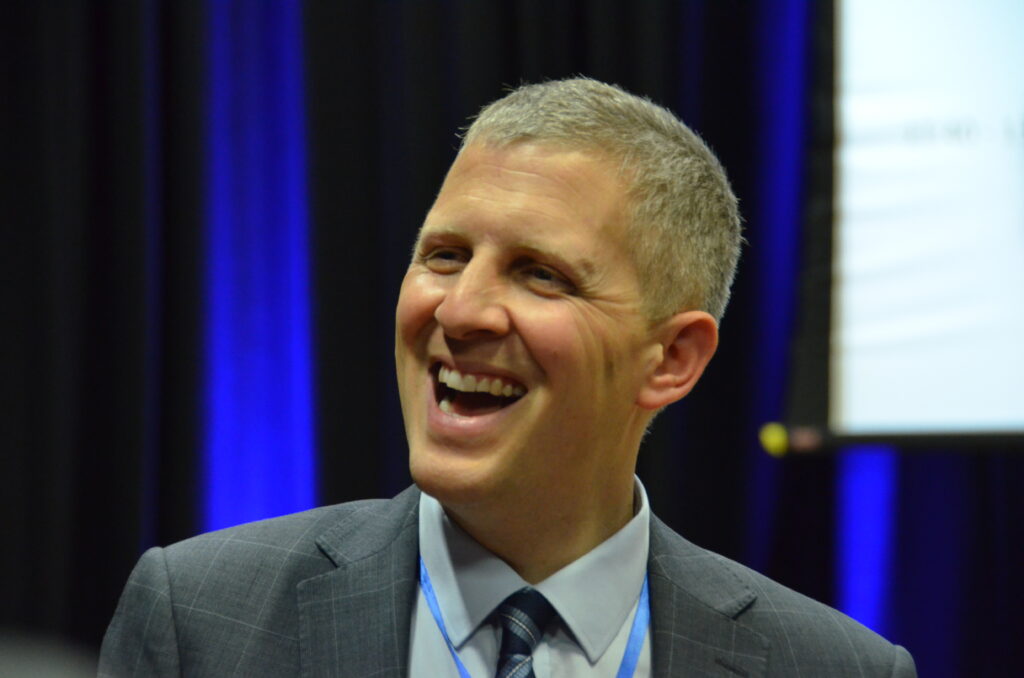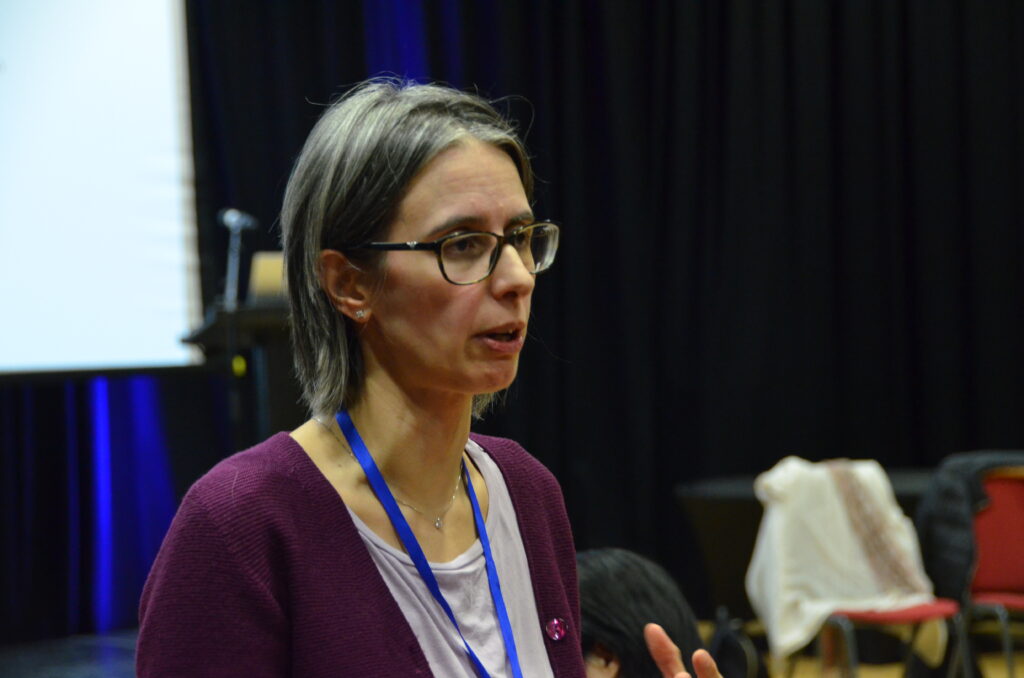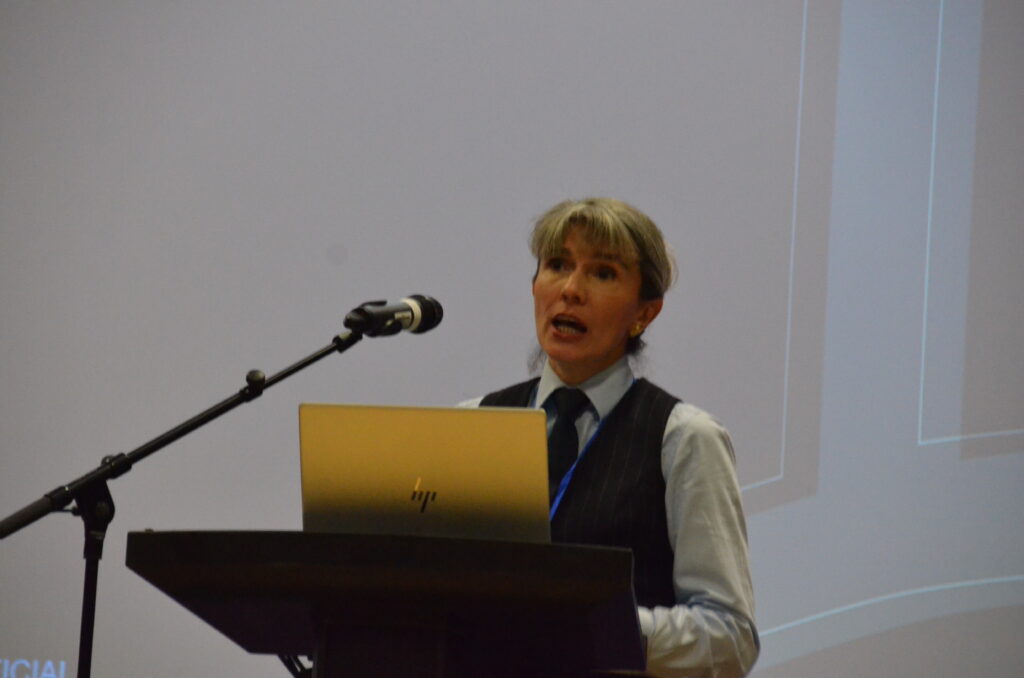Prior to the pandemic, Network Rail ran an annual conference to encourage innovation in signalling and control technology. Obviously, during lockdown such meetings were not possible and the conferences stopped. This year the Railway Industry Association (RIA) worked in partnership with Network Rail to revive the idea and organised RIA SIGEX 2023. The event took place on 21 November at The Venue, De Montfort University, Leicester. A key tenet of the original event, successfully carried forward to the revised format, is to highlight innovation, either technical or in the way work is organised, with the intent of bringing down the price of signalling and control systems which is approaching being unaffordable in the UK. Another key tenet was to keep the event affordable for all with minimal cost to exhibitors and free for attendees.
The conference was organised by RIA and supported by Network Rail and Kilborn Consulting. It was organised around a number of exhibits in the large hall where companies displayed ideas supporting innovation across the signalling and control sector. A number of presentations were given in the auditorium highlighting the critical needs of the industry. Between these presentations there was time to listen to outlines of some of the exhibits and to network with others involved with signalling and control systems.

RIA objectives
The main presentations opened with a welcome and summary of the role and objectives of RIA from Technical Director David Clarke. Some of the key questions he asked included: Is decarbonisation on target? What should we assume about future growth and how does this affect decisions on current and future rolling stock requirements? What are the priority routes for electrification?
On the decarbonisation targets, the plans for rail are significantly behind those set by the Department for Transport (DfT) in its July 2021 decarbonisation plan and consequently many of the other plans are currently uncertain. It was also emphasised that the recent curtailment of HS2 leaves additional unanswered questions about what is required and what will be necessary.
Sustainable signalling renewals
David’s presentation was followed by Martin Jones of Network Rail who talked about Target 190 plus. The industry challenge is that the cost of signalling renewals significantly exceeds the budget available whilst at the same time the volume of work is greater than the available resources can deliver. Add to those challenges the fact that like for like renewals will fail to deliver any significant safety benefit (because they would not include automatic train protection and such renewals require significant track access to deliver and maintain, resulting in greater disruption to railway users) and it becomes clear that significant innovation is needed to sustain the railway in the longer term. So, the challenge is to reduce the current ETCS level 2 Signalling Equivalent Unit (SEU) cost from circa £315,000 to around or below £190,000 by or soon after 2029.
Three primary pillars support the objective. The right technology, the right tools, and the right processes. Technically, ETCS is supported by EULYNX which itself aims to ensure a compatible component interface to increase flexibility in product choice, hybrid train detection, and ATP/ATO with good traffic management. The right tools include, getting option selection right first time, creating a synthetic environment which supports greater levels of automation, and understanding the opportunities created so that timetabling can maximise the benefits. Process works need to focus on methods of design and validation that are simpler, easier, and quicker to use. All of this needs innovation to deliver successfully.

There is a three-phased approach which recognises: first, the need for research and development to create the innovative ideas; second, a transition phase to ensure that workable ideas are embedded in future work processes; and third, when all ongoing work adopts the revised methods.
At present it is anticipated that phase one and part of phase two will be completed during CP6 with the remaining parts of phase two and deployment occurring during CP7.
Testing and validation
Following Martin, Luisa Moisio from RSSB discussed better and quicker testing and validation. This talk looked at the classic V-model life cycle from the very start of the business requirement right through to the decommissioning of a system at the end of its useful life. The key topic of the presentation was the increased use of data and modelling to deliver reliable outputs that confirm successful delivery of the required system with the right parameters of safety, functionality, and cost.
It is of course important to have good quality models, including digital twins, and to have suitably rich data and the ability to analyse this data to achieve the objective. Finally, it is important that all these things fit together properly to ensure the tests are both realistic and can emulate the stresses the system is likely to encounter when in use.
Synthetic environment
After a break to tour the exhibition and discuss innovations with individual suppliers there were further presentations in the afternoon. These opened with Rubina Greenwood from Network Rail discussing its Synthetic Environment. The idea here is to have suitable processes and systems in place from the original business requirement through to hand back to the asset steward, such that the whole project runs as seamlessly as practical. Initial development work is underway and it is planned that trial use should begin in 2025, operating in shadow mode to make sure it achieves the objectives set. One key requirement for such a system is a common data environment where most if not all data is exchanged in well-defined formats.
Global Centre of Rail Excellence

The presentations continued with an outline of the evolution of the Global Centre of Rail Excellence (GCRE) by Andy Doherty. Andy outlined the services GCRE is planning to offer which include rolling stock testing, infrastructure systems innovations including accelerated whole life testing, and showcasing new products in a controlled environment. A major advantage of the GCRE is its availability 24 hours a day, seven days a week, and that it is being established to be risk tolerant rather than risk averse. This means that, provided appropriate controls are in place, certain risks will be tolerated whereas in other locations those risks would prevent work occurring.
This of course is a particular benefit of an independent test site that is not part of an operational network.
Progress with GCRE can be summarised as follows:
- Initial investment from Welsh and UK governments is available.
- Private sector investment is being sought.
- It is expected to commence earthworks in the first quarter of 2024 with railway works commencing a year later.
- The facility is expected to be fully functional by 2026/7, although some small-scale testing should be possible before then.
- Further development of the site is expected to continue in subsequent years.
National ETCS Test Laboratory
George Walker and Chris Winter from AtkinsRéalis then gave a talk about the National ETCS Test Laboratory (NET-LAB). In 2020, AtkinsRéalis was awarded a 10-year contract to provide support services to Network Rail for the testing and laboratory demonstration of compliance of ETCS products with the Technical Specifications for Interoperability (TSI) and national reference design to support product acceptance. The aim was to give a level of independence and to reduce the volume of on-site testing. NET-LAB will offer independent testing with suitable levels of automation offering repeatable 24-hour testing of many of the products and interfaces involved in an ETCS application.
The overall laboratory has an on-board gateway linked to a trackside gateway enabling both the train borne and trackside systems to be tested. The tests are conducted through an orchestrator which runs the required test scenarios, manages any necessary simulations, records the results, and ensures suitable repeatability of any tests.

Digital twins
Following further exhibition browsing time, Robert McGeachy and Ben Orcan from Thales talked about Digital Twins. This emphasised the increasing rate of change and the dynamic growth of interconnectivity with its effects on automation, before outlining how simulation and digital twins in the general sense offer ways of understanding these systems. They concluded by outlining some of the applications in areas of transport which have a safety critical element.
Their talk was followed by another from Alexandra Luck from the Department for Business and Trade outlining the national Digital Twin Programme. This final presentation had four framework components: operating frameworks, data and technology, skills and engagement, and finally demonstrators. The operating framework looked at a wide range of issues such as legal issues, ethics, and sustainability amongst others, whilst the technology section encompassed integration, understanding data sources and quality, and model interoperability.
In terms of skills, there are the current gaps in understanding when and how to use the results and issues around how those skills may change over time as the technology improves. In terms of demonstrators, two topics were presented with respect to transport, their use by the DfT itself, and the planned use of Digital twins by the GCRE project.
Overall, the day was useful for getting an understanding of the topics that will influence operations in the future and appreciating some of the innovations currently in progress that could help the railway, in particular railway signalling and control becoming more effective and affordable in the future.
A key takeaway was the increasing need for the railway to speak with one voice, especially to government, if it is to obtain the funding needed to progress many much-needed projects.
Feedback from the event was overwhelmingly positive with some excellent networking both during and in a local pub afterwards. Consequently the RIA plan to run the event again next year at a venue yet to be determined but on Tuesday 26 November. A date for your diaries.
Image credit: RIA

